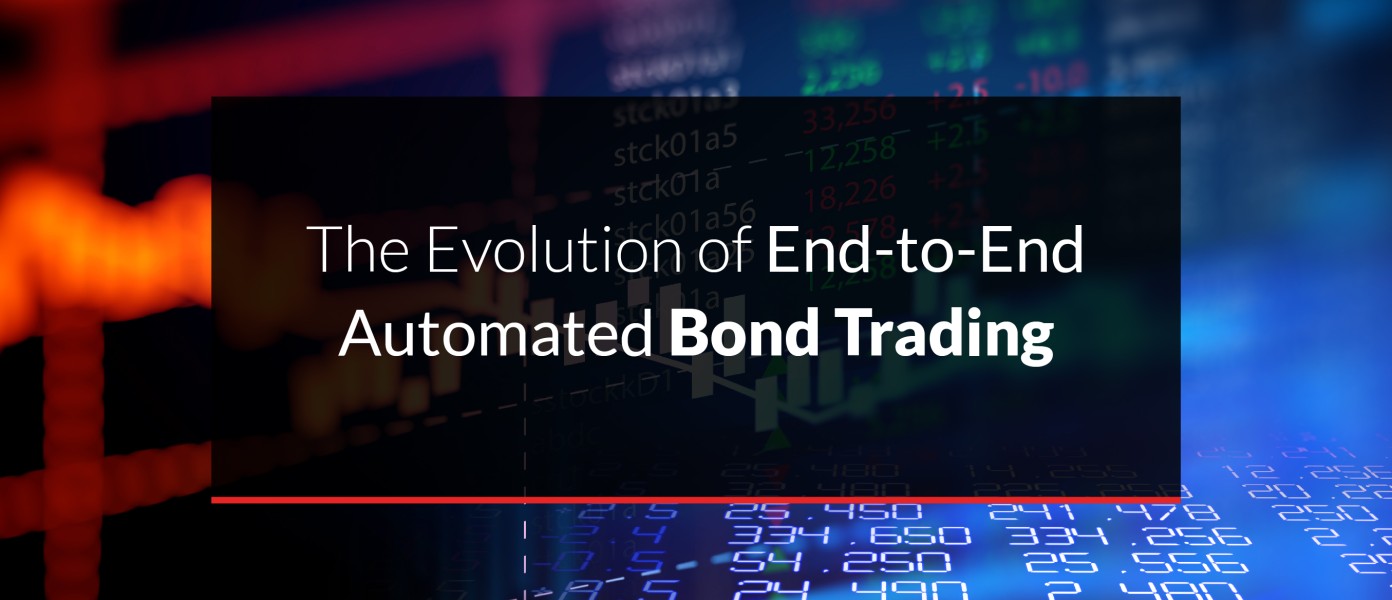

How fixed income trading automation is being driven by AI, cloud computing and interoperability
Automated corporate bond trading has evolved from being impossible just a few years ago to becoming an important tool for both buy-side and sell-side bond trading desks. Buy-side clients are looking to the sell-side to help them automate a meaningful percentage of their trading and sell-side traders are aiming to make a significant portion of their own trades no-touch or low-touch.
To automate sell-side trading, a desk needs to be able to receive client inquiries, source and aggregate data from multiple feeds, use an AI program to process the data and model prices and liquidity, and then send the price back to the client. Trades, positions, risk and P&L need to be monitored and recorded and the system needs to be trained to suit the trading style of the desk.
Whether they’ve been built in-house or provided by vendors, many systems have existed for some time on both the sell-side and buy-side for order and workflow management, monitoring and record-keeping. Multiple well-established vendors provide electronic data sources and electronic trading venues have been in use for about 20 years. But advances in technology have only recently made possible the automated real-time pricing required for automated trading.

New technologies enable real-time automated pricing
Advances in interoperability have facilitated the aggregation of data from multiple sources, while AI has made pricing and liquidity modelling possible and cloud has provided the processing speed necessary to perform these functions in real-time.
New companies have been founded to use these technologies to develop automated real-time pricing. Market leader Overbond, for instance, has developed the COBI-Pricing LIVE system, an AI pricing and liquidity-modeling engine that allows sell-side trading desks to fully automate 30 percent of their RFQs and execute an additional 20 percent with trader supervision.
The system achieves a refresh rate of less than three seconds using cloud technology and its interoperability allows for data aggregation from multiple sources and integration with legacy systems on the desk. It also allows traders to automate trade flow, improve liquidity risk, improve price monitoring and reporting, respond to 80 to 120 percent more RFQs, maintain an optimal hit ratio and significantly increase desk P&L.
To develop end-to-end capabilities to meet the demand for automated trading, traditional players will need to similarly employ these non-traditional technologies. No single OMS/EMS provider, electronic venue or dealer has full end-to-end automated trade capabilities or uses all three technologies (data aggregation, cloud and AI). At this point it will be hard for them to build all three and develop a real-time pricing system. So what’s the solution?

Companies are expanding their capabilities
Recently, there’s been a wave of consolidation across the financial industry as companies try to build end-to end-systems. Last year, for example, ION Markets, a software and automation company that provides trading management and execution technology to financial firms, took control of Broadway Technology, which provides front-office technology for multiple asset classes. This year ION acquired DASH Financial Technologies, which provides options technology and execution, and it’s now rumoured to be looking at buying List SpA, a trading platform providing position and execution management, auto-quoting and algorithmic trading.
And the pace of acquisitions appears to be picking up. In March 2021, TP ICAP, an interdealer broker, TD Bank Group and fintech company Broadridge all made acquisitions to expand their electronic trading capabilities. TP ICAP acquired Liquidnet Holdings Inc., a trading venue for asset managers, to expand its buy-side trade execution services. TD Bank Group acquired Headlands Tech Global Markets LLC, a quantitative fixed income trading company that will allow TD to provide automated market-making in U.S. municipal and investment-grade corporate bonds. And Broadridge acquired Itivit, in part to expand its front-office capabilities.
Until now, desks and vendors have relied on the use of multiple systems from multiple sources to build an end-to-end automated trading system. But it appears there might be a movement toward building single-source end-to-end capabilities. If this is the case, will standalone companies start to lose competitive ground? And given the difficulty of creating a real-time pricing solution from scratch, we could start to see acquisitions of AI firms like Overbond.

